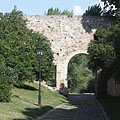(Optimalisert for enheter med liten skjerm)
Nature, flora and fauna, miscellaneous photos - Mogyoród, Ungarn
Når du klikker:
Klikk på bildene!
-
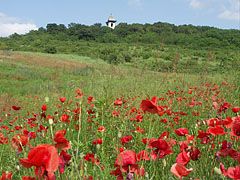
Poppy field close to the lookout tower on Somlyó Hill
With crop rotation this area is sometimes wheat field, sometimes corn field and other times (like on the picture) simple plow land.
Dato for fotografering: 20102010
Laget av: Robert Németh
Kameramodell: Konica Minolta Dimage A200
Mogyoród, Ungarn
-

European green lizard (Lacerta viridis)
The adult males can be differentiated from the females by their vivid blue or cyan colored neck.
Dato for fotografering: 20102010
Laget av: Robert Németh
Kameramodell: Konica Minolta Dimage A200
Mogyoród, Ungarn
-
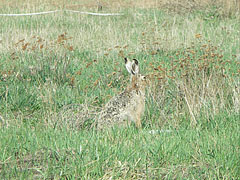
European hare or Brown hare, Eastern jackrabbit (Lepus europaeus)
Dato for fotografering: 20122012
Laget av: Robert Németh
Kameramodell: Konica Minolta Dimage A200
Mogyoród, Ungarn
-

Ripe rose hips
Dato for fotografering: 20082008
Laget av: Robert Németh
Kameramodell: Konica Minolta Dimage A200
Mogyoród, Ungarn
-

European hedgehog or Common hedgehog (Erinaceus europaeus)
Dato for fotografering: 20072007
Laget av: Robert Németh
Kameramodell: Konica Minolta Dimage A200
Mogyoród, Ungarn
-

Scarce swallowtail or Sail swallowtail (Iphiclides podalirius), a great butterfly
Dato for fotografering: 20122012
Laget av: Robert Németh
Kameramodell: Konica Minolta Dimage A200
Mogyoród, Ungarn
-

Wild rose or Dog rose (Rosa canina) flowers
Dog rose is a medicinal plant and originated in Persia. The cultivated white garden rose (Rosa x alba) is a hybrid of this wild rose species.
Dato for fotografering: 20122012
Laget av: Robert Németh
Kameramodell: Konica Minolta Dimage A200
Mogyoród, Ungarn
-

European hedgehog or Common hedgehog (Erinaceus europaeus)
Dato for fotografering: 20072007
Laget av: Robert Németh
Kameramodell: Konica Minolta Dimage A200
Mogyoród, Ungarn
-
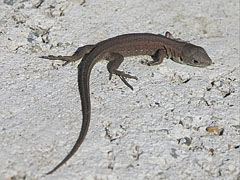
Brown lizard is sunbathing
Dato for fotografering: 20072007
Laget av: Robert Németh
Kameramodell: Konica Minolta Dimage A200
Mogyoród, Ungarn
-

Brown lizard
Dato for fotografering: 20072007
Laget av: Robert Németh
Kameramodell: Konica Minolta Dimage A200
Mogyoród, Ungarn
-
Mushroom
Dato for fotografering: 20082008
Laget av: Robert Németh
Kameramodell: Konica Minolta Dimage A200
Mogyoród, Ungarn
Mushroom - Mogyoród, Ungarn -
Mushroom
Dato for fotografering: 20082008
Laget av: Robert Németh
Kameramodell: Konica Minolta Dimage A200
Mogyoród, Ungarn
Mushroom - Mogyoród, Ungarn -
Red fruits of a European spindle or Common spindle (Euonymus europaeus) bush
Dato for fotografering: 20082008
Laget av: Robert Németh
Kameramodell: Konica Minolta Dimage A200
Mogyoród, Ungarn
Red fruits of a European spindle or Common spindle (Euonymus europaeus) bush - Mogyoród, Ungarn -
Black mulberry (Morus nigra) tree
Dato for fotografering: 20112011
Laget av: Robert Németh
Kameramodell: Konica Minolta Dimage A200
Mogyoród, Ungarn
Black mulberry (Morus nigra) tree - Mogyoród, Ungarn -
The blackberry-like fruits of a black mulberry (Morus nigra)
Dato for fotografering: 20112011
Laget av: Robert Németh
Kameramodell: Konica Minolta Dimage A200
Mogyoród, Ungarn
The blackberry-like fruits of a black mulberry (Morus nigra) - Mogyoród, Ungarn -
The european hares (Lepus europaeus) are less cautious in early spring, in their breeding season
Dato for fotografering: 20122012
Laget av: Robert Németh
Kameramodell: Konica Minolta Dimage A200
Mogyoród, Ungarn
The european hares (Lepus europaeus) are less cautious in early spring, in their breeding season - Mogyoród, Ungarn -
Grazing Hungarian racka and other sheep on the hillside
Dato for fotografering: 20092009
Laget av: Robert Németh
Kameramodell: Konica Minolta Dimage A200
Mogyoród, Ungarn
Grazing Hungarian racka and other sheep on the hillside - Mogyoród, Ungarn -
White wagtail (Motacilla alba), a small perching bird (songbird)
Dato for fotografering: 20092009
Laget av: Robert Németh
Kameramodell: Konica Minolta Dimage A200
Mogyoród, Ungarn
White wagtail (Motacilla alba), a small perching bird (songbird) - Mogyoród, Ungarn -
Six-spot burnet (Zygaena filipendulae), a day-flying moth on a thistle flower
Dato for fotografering: 20102010
Laget av: Robert Németh
Kameramodell: Konica Minolta Dimage A200
Mogyoród, Ungarn
Six-spot burnet (Zygaena filipendulae), a day-flying moth on a thistle flower - Mogyoród, Ungarn -
Purple wild flower
Dato for fotografering: 20102010
Laget av: Robert Németh
Kameramodell: Konica Minolta Dimage A200
Mogyoród, Ungarn
Purple wild flower - Mogyoród, Ungarn -
European green lizard (Lacerta viridis)
Dato for fotografering: 20102010
Laget av: Robert Németh
Kameramodell: Konica Minolta Dimage A200
Mogyoród, Ungarn
European green lizard (Lacerta viridis) - Mogyoród, Ungarn -
European green lizard (Lacerta viridis)
Dato for fotografering: 20112011
Laget av: Robert Németh
Kameramodell: Konica Minolta Dimage A200
Mogyoród, Ungarn
European green lizard (Lacerta viridis) - Mogyoród, Ungarn -
White patched Cream-spot tiger (Epicallia villica or Arctia villica), a moth butterfly is relaxing with closed wings on a raspberry leaf
When this moth spreads its forewings, the spectacular orange hind wings and the redish abdomen (actually the body of the butterfly) appears.
Dato for fotografering: 20112011
Laget av: Robert Németh
Kameramodell: Konica Minolta Dimage A200
Mogyoród, Ungarn
White patched Cream-spot tiger (Epicallia villica or Arctia villica), a moth butterfly is relaxing with closed wings on a raspberry leaf - Mogyoród, Ungarn -
Escaped raspberries around Somlyó Hill
Dato for fotografering: 20092009
Laget av: Robert Németh
Kameramodell: Konica Minolta Dimage A200
Mogyoród, Ungarn
Escaped raspberries around Somlyó Hill - Mogyoród, Ungarn -
Raspberry
Dato for fotografering: 20092009
Laget av: Robert Németh
Kameramodell: Konica Minolta Dimage A200
Mogyoród, Ungarn
Raspberry - Mogyoród, Ungarn -
Blossoming wild dog rose (Rosa canina) shrub
Dato for fotografering: 20122012
Laget av: Robert Németh
Kameramodell: Konica Minolta Dimage A200
Mogyoród, Ungarn
Blossoming wild dog rose (Rosa canina) shrub - Mogyoród, Ungarn -
Beautiful flowers of the dog rose (Rosa canina)
Dato for fotografering: 20122012
Laget av: Robert Németh
Kameramodell: Konica Minolta Dimage A200
Mogyoród, Ungarn
Beautiful flowers of the dog rose (Rosa canina) - Mogyoród, Ungarn -
The tiny pink spring flowers of the Redstem filaree or Common Stork's-bill or Pinweed (Erodium cicutarium)
This flower belongs to the cranesbill (Geraniaceae) family. The plant group got its name after the crane- or stork beak like long and pointed seed-pod. Its leaves a bit look like a fern.
Dato for fotografering: 20082008
Laget av: Robert Németh
Kameramodell: Konica Minolta Dimage A200
Mogyoród, Ungarn
The tiny pink spring flowers of the Redstem filaree or Common Stork's-bill or Pinweed (Erodium cicutarium) - Mogyoród, Ungarn -
Rose chafer (Cetonia aurata) beetle
Dato for fotografering: 20082008
Laget av: Robert Németh
Kameramodell: Konica Minolta Dimage A200
Mogyoród, Ungarn
Rose chafer (Cetonia aurata) beetle - Mogyoród, Ungarn -
Scarce swallowtail or Sail swallowtail (Iphiclides podalirius) butterfly on Lavender (Lavandula angustifolia) flowers
Dato for fotografering: 20122012
Laget av: Robert Németh
Kameramodell: Konica Minolta Dimage A200
Mogyoród, Ungarn
Scarce swallowtail or Sail swallowtail (Iphiclides podalirius) butterfly on Lavender (Lavandula angustifolia) flowers - Mogyoród, Ungarn -
Scarce swallowtail (Iphiclides podalirius) butterfly on Lavender (Lavandula angustifolia) flowers
Dato for fotografering: 20122012
Laget av: Robert Németh
Kameramodell: Konica Minolta Dimage A200
Mogyoród, Ungarn
Scarce swallowtail (Iphiclides podalirius) butterfly on Lavender (Lavandula angustifolia) flowers - Mogyoród, Ungarn -
Scarce swallowtail (Iphiclides podalirius) butterfly on Summer lilac or Butterfly-bush (Buddleja davidii) flowers
Dato for fotografering: 20112011
Laget av: Robert Németh
Kameramodell: Konica Minolta Dimage A200
Mogyoród, Ungarn
Scarce swallowtail (Iphiclides podalirius) butterfly on Summer lilac or Butterfly-bush (Buddleja davidii) flowers - Mogyoród, Ungarn -
Corn
Dato for fotografering: 20112011
Laget av: Robert Németh
Kameramodell: Konica Minolta Dimage A200
Mogyoród, Ungarn
Corn - Mogyoród, Ungarn -
Wasp spider (Argiope bruennichi)
Dato for fotografering: 20082008
Laget av: Robert Németh
Kameramodell: Konica Minolta Dimage A200
Mogyoród, Ungarn
Wasp spider (Argiope bruennichi) - Mogyoród, Ungarn -
Field cricket (Gryllus campestris), a black colored specimen of this big headed large insect
Dato for fotografering: 20072007
Laget av: Robert Németh
Kameramodell: Konica Minolta Dimage A200
Mogyoród, Ungarn
Field cricket (Gryllus campestris), a black colored specimen of this big headed large insect - Mogyoród, Ungarn -
Geolycosa vultuosa wolf spider female takes care of her cocoon
The cocoon is a "ball" made of spider web, it protects the juvenile spiders for a while.
Dato for fotografering: 20112011
Laget av: Robert Németh
Kameramodell: Konica Minolta Dimage A200
Mogyoród, Ungarn
Geolycosa vultuosa wolf spider female takes care of her cocoon - Mogyoród, Ungarn -
Pannonian zephyr blue plebejus butterfly (Plebejus sephirus)
Dato for fotografering: 20112011
Laget av: Robert Németh
Kameramodell: Konica Minolta Dimage A200
Mogyoród, Ungarn
Pannonian zephyr blue plebejus butterfly (Plebejus sephirus) - Mogyoród, Ungarn -
Wheatears
Dato for fotografering: 20092009
Laget av: Robert Németh
Kameramodell: Konica Minolta Dimage A200
Mogyoród, Ungarn
Wheatears - Mogyoród, Ungarn -
Wheat-field around Somlyó Hill
Dato for fotografering: 20092009
Laget av: Robert Németh
Kameramodell: Konica Minolta Dimage A200
Mogyoród, Ungarn
Wheat-field around Somlyó Hill - Mogyoród, Ungarn -
Cornflower, Bachelors button or Bluebottle (Centaurea cyanus)
This flower belongs to the aster, daisy or sunflower (Asteraceae) plant family which is also popular in gardens. It can be seen usually in cultivated grain fields, that's why it is commonly called "cornflower". It is originated from Southern Europe, but today practically spread all over the world.
Dato for fotografering: 20082008
Laget av: Robert Németh
Kameramodell: Konica Minolta Dimage A200
Mogyoród, Ungarn
Cornflower, Bachelors button or Bluebottle (Centaurea cyanus) - Mogyoród, Ungarn -
Cockchafer, May bug or Spang beetle (Melolontha melolontha)
Dato for fotografering: 20082008
Laget av: Robert Németh
Kameramodell: Konica Minolta Dimage A200
Mogyoród, Ungarn
Cockchafer, May bug or Spang beetle (Melolontha melolontha) - Mogyoród, Ungarn -
Ripening common blackberry (Rubus fruticosus)
Dato for fotografering: 20082008
Laget av: Robert Németh
Kameramodell: Konica Minolta Dimage A200
Mogyoród, Ungarn
Ripening common blackberry (Rubus fruticosus) - Mogyoród, Ungarn -
Jimson weed or Devil's trumpet (Datura stramonium), flower
The Devil's trumpet (also known as Thorn apple, Stinkweed, etc.) is a poisonous weed that belong to the potato family (Solanaceae).
Dato for fotografering: 20082008
Laget av: Robert Németh
Kameramodell: Konica Minolta Dimage A200
Mogyoród, Ungarn
Jimson weed or Devil's trumpet (Datura stramonium), flower - Mogyoród, Ungarn -
Jimson weed or Devil's trumpet (Datura stramonium), crops
Dato for fotografering: 20082008
Laget av: Robert Németh
Kameramodell: Konica Minolta Dimage A200
Mogyoród, Ungarn
Jimson weed or Devil's trumpet (Datura stramonium), crops - Mogyoród, Ungarn -
Rose hips
Dato for fotografering: 20082008
Laget av: Robert Németh
Kameramodell: Konica Minolta Dimage A200
Mogyoród, Ungarn
Rose hips - Mogyoród, Ungarn -
Rose hips
Dato for fotografering: 20082008
Laget av: Robert Németh
Kameramodell: Konica Minolta Dimage A200
Mogyoród, Ungarn
Rose hips - Mogyoród, Ungarn -
Bunch of grapes
Dato for fotografering: 20092009
Laget av: Robert Németh
Kameramodell: Konica Minolta Dimage A200
Mogyoród, Ungarn
Bunch of grapes - Mogyoród, Ungarn -
Common hawthorn or Single-seeded hawthorn (Crataegus monogyna) shrub
Dato for fotografering: 20092009
Laget av: Robert Németh
Kameramodell: Konica Minolta Dimage A200
Mogyoród, Ungarn
Common hawthorn or Single-seeded hawthorn (Crataegus monogyna) shrub - Mogyoród, Ungarn -
Red fruits of the Common hawthorn or Single-seeded hawthorn (Crataegus monogyna)
Dato for fotografering: 20082008
Laget av: Robert Németh
Kameramodell: Konica Minolta Dimage A200
Mogyoród, Ungarn
Red fruits of the Common hawthorn or Single-seeded hawthorn (Crataegus monogyna) - Mogyoród, Ungarn -
Blue berries of a Blackthorn or Sloe (Prunus spinosa)
Dato for fotografering: 20092009
Laget av: Robert Németh
Kameramodell: Konica Minolta Dimage A200
Mogyoród, Ungarn
Blue berries of a Blackthorn or Sloe (Prunus spinosa) - Mogyoród, Ungarn -
Common hawthorn or Single-seeded hawthorn (Crataegus monogyna) tree
Dato for fotografering: 20082008
Laget av: Robert Németh
Kameramodell: Konica Minolta Dimage A200
Mogyoród, Ungarn
Common hawthorn or Single-seeded hawthorn (Crataegus monogyna) tree - Mogyoród, Ungarn -
Sleepy wasp in autumn
Dato for fotografering: 20082008
Laget av: Robert Németh
Kameramodell: Konica Minolta Dimage A200
Mogyoród, Ungarn
Sleepy wasp in autumn - Mogyoród, Ungarn -
Walnut
Dato for fotografering: 20072007
Laget av: Robert Németh
Kameramodell: Konica Minolta Dimage A200
Mogyoród, Ungarn
Walnut - Mogyoród, Ungarn -
Walnut tree (Juglans regia) in autumn colors
Dato for fotografering: 20092009
Laget av: Robert Németh
Kameramodell: Konica Minolta Dimage A200
Mogyoród, Ungarn
Walnut tree (Juglans regia) in autumn colors - Mogyoród, Ungarn -
Ripe rose hips
Dato for fotografering: 20082008
Laget av: Robert Németh
Kameramodell: Konica Minolta Dimage A200
Mogyoród, Ungarn
Ripe rose hips - Mogyoród, Ungarn -
White champion (Silene latifolia or Melandrium album) flower
Dato for fotografering: 20082008
Laget av: Robert Németh
Kameramodell: Konica Minolta Dimage A200
Mogyoród, Ungarn
White champion (Silene latifolia or Melandrium album) flower - Mogyoród, Ungarn -
Yellow flowers of Meadow salsify or Showy Goat's-beard (Tragopogon pratensis) in autumn
Dato for fotografering: 20082008
Laget av: Robert Németh
Kameramodell: Konica Minolta Dimage A200
Mogyoród, Ungarn
Yellow flowers of Meadow salsify or Showy Goat's-beard (Tragopogon pratensis) in autumn - Mogyoród, Ungarn -
Peeping out ripe cob of corn
Dato for fotografering: 20082008
Laget av: Robert Németh
Kameramodell: Konica Minolta Dimage A200
Mogyoród, Ungarn
Peeping out ripe cob of corn - Mogyoród, Ungarn -
White meadow flower
Dato for fotografering: 20082008
Laget av: Robert Németh
Kameramodell: Konica Minolta Dimage A200
Mogyoród, Ungarn
White meadow flower - Mogyoród, Ungarn -
Tree in autumn colors
Dato for fotografering: 20082008
Laget av: Robert Németh
Kameramodell: Konica Minolta Dimage A200
Mogyoród, Ungarn
Tree in autumn colors - Mogyoród, Ungarn -
Brownish leaves
Dato for fotografering: 20082008
Laget av: Robert Németh
Kameramodell: Konica Minolta Dimage A200
Mogyoród, Ungarn
Brownish leaves - Mogyoród, Ungarn -
Harvest of a wild flower
Dato for fotografering: 20082008
Laget av: Robert Németh
Kameramodell: Konica Minolta Dimage A200
Mogyoród, Ungarn
Harvest of a wild flower - Mogyoród, Ungarn -
Eurasian tree sparrow (Passer montanus)
Dato for fotografering: 20102010
Laget av: Robert Németh
Kameramodell: Konica Minolta Dimage A200
Mogyoród, Ungarn
Eurasian tree sparrow (Passer montanus) - Mogyoród, Ungarn -
Buds locked in ice
Dato for fotografering: 20082008
Laget av: Robert Németh
Kameramodell: Konica Minolta Dimage A200
Mogyoród, Ungarn
Buds locked in ice - Mogyoród, Ungarn -
Buds locked in ice
Dato for fotografering: 20082008
Laget av: Robert Németh
Kameramodell: Konica Minolta Dimage A200
Mogyoród, Ungarn
Buds locked in ice - Mogyoród, Ungarn -
Wild boar or Wild pig (Sus scrofa) herd searching for food
Dato for fotografering: 20102010
Laget av: Robert Németh
Kameramodell: Konica Minolta Dimage A200
Mogyoród, Ungarn
Wild boar or Wild pig (Sus scrofa) herd searching for food - Mogyoród, Ungarn -
Two "pumi" dogs (traditional hungarian dog breed) are herding a wild pig (Sus scrofa)
Dato for fotografering: 20082008
Laget av: Robert Németh
Kameramodell: Konica Minolta Dimage A200
Mogyoród, Ungarn
Two "pumi" dogs (traditional hungarian dog breed) are herding a wild pig (Sus scrofa) - Mogyoród, Ungarn -
Dato for fotografering: 20072007
Laget av: Robert Németh
Kameramodell: Konica Minolta Dimage A200
Mogyoród, Ungarn
- Mogyoród, Ungarn -
Dato for fotografering: 20072007
Laget av: Robert Németh
Kameramodell: Konica Minolta Dimage A200
Mogyoród, Ungarn
- Mogyoród, Ungarn -
Dato for fotografering: 20072007
Laget av: Robert Németh
Kameramodell: Konica Minolta Dimage A200
Mogyoród, Ungarn
- Mogyoród, Ungarn -
Dato for fotografering: 20072007
Laget av: Robert Németh
Kameramodell: Konica Minolta Dimage A200
Mogyoród, Ungarn
- Mogyoród, Ungarn -
Giant snowdrops (Galanthus elwesii) in a garden in early spring
Dato for fotografering: 09.02.20082008
Laget av: Robert Németh
Kameramodell: Konica Minolta Dimage A200
Mogyoród, Ungarn
Giant snowdrops (Galanthus elwesii) in a garden in early spring - Mogyoród, Ungarn -
Dato for fotografering: 20082008
Laget av: Robert Németh
Kameramodell: Konica Minolta Dimage A200
Mogyoród, Ungarn
- Mogyoród, Ungarn -
Dato for fotografering: 20082008
Laget av: Robert Németh
Kameramodell: Konica Minolta Dimage A200
Mogyoród, Ungarn
- Mogyoród, Ungarn -
Dato for fotografering: 20082008
Laget av: Robert Németh
Kameramodell: Konica Minolta Dimage A200
Mogyoród, Ungarn
- Mogyoród, Ungarn -
Dato for fotografering: 20092009
Laget av: Robert Németh
Kameramodell: Konica Minolta Dimage A200
Mogyoród, Ungarn
- Mogyoród, Ungarn -
Dato for fotografering: 20092009
Laget av: Robert Németh
Kameramodell: Konica Minolta Dimage A200
Mogyoród, Ungarn
- Mogyoród, Ungarn -
Dato for fotografering: 20092009
Laget av: Robert Németh
Kameramodell: Konica Minolta Dimage A200
Mogyoród, Ungarn
- Mogyoród, Ungarn -
Dato for fotografering: 20092009
Laget av: Robert Németh
Kameramodell: Konica Minolta Dimage A200
Mogyoród, Ungarn
- Mogyoród, Ungarn -
Dato for fotografering: 20092009
Laget av: Robert Németh
Kameramodell: Konica Minolta Dimage A200
Mogyoród, Ungarn
- Mogyoród, Ungarn -
Dato for fotografering: 20092009
Laget av: Robert Németh
Kameramodell: Konica Minolta Dimage A200
Mogyoród, Ungarn
- Mogyoród, Ungarn -
Winter landscape with horses
Dato for fotografering: 20102010
Laget av: Robert Németh
Kameramodell: Konica Minolta Dimage A200
Mogyoród, Ungarn
Winter landscape with horses - Mogyoród, Ungarn -
Dato for fotografering: 20102010
Laget av: Robert Németh
Kameramodell: Konica Minolta Dimage A200
Mogyoród, Ungarn
- Mogyoród, Ungarn -
Dato for fotografering: 20102010
Laget av: Robert Németh
Kameramodell: Konica Minolta Dimage A200
Mogyoród, Ungarn
- Mogyoród, Ungarn -
Dato for fotografering: 20112011
Laget av: Robert Németh
Kameramodell: Konica Minolta Dimage A200
Mogyoród, Ungarn
- Mogyoród, Ungarn -
Dato for fotografering: 20112011
Laget av: Robert Németh
Kameramodell: Konica Minolta Dimage A200
Mogyoród, Ungarn
- Mogyoród, Ungarn -
Dato for fotografering: 20112011
Laget av: Robert Németh
Kameramodell: Konica Minolta Dimage A200
Mogyoród, Ungarn
- Mogyoród, Ungarn -
Dato for fotografering: 20122012
Laget av: Robert Németh
Kameramodell: Konica Minolta Dimage A200
Mogyoród, Ungarn
- Mogyoród, Ungarn
Klikk på bildene!
Egenskaper
Plassering:
GPS-Koordinaten: Breddegrad 47°35'33", Lengdegrad 19°15'20" (N47 35.55 - E19 15.33)
Informasjon, korte historier, interessante fakta
 Black mulberry (Morus nigra) tree
Black mulberry (Morus nigra) tree
The plant came to Hungary probably from Central-Asia. Formerly together with the white mulberry (originated in China) it was very common at the yards of almost every farmhouse in Hungary.
Mulberry fruit can be consumed raw, or as jam or preserve as well. In Hungary this fruit is sometimes called "tree-strawberry" or in the Transdanubia (Dunántúl) region usually "blackberry", probably due to the similar look.
 Grazing Hungarian racka and other sheep on the hillside
Grazing Hungarian racka and other sheep on the hillside
Racka of Hortobágy is a traditional hungarian sheep breed. It is easy to recognize by its unusual V-shaped straight spiral-twisted horns. The ancestor of this breed is the Transcaspian urial or arkar (Ovis orientalis arkal or Ovis vignei var. arkal), the only one long-tailed wild sheep species. Racka sheep living in the Carpathian Basin possible since the Hungarian conquest in the 9th-10th centuries, but it is still unclear which ethnic group brought it to here (by linguistic history researches they were quite possibly the Hungarians).
There are two variations of racka sheep, a white and a black colored. Black racka is rarer, even the cossets and young lambs have already dark fur.
 Geolycosa vultuosa wolf spider female takes care of her cocoon
Geolycosa vultuosa wolf spider female takes care of her cocoon
The cocoon is a "ball" made of spider web, it protects the juvenile spiders for a while.
The Geolycosa vultuosa wolf spider can be easily confused with the relative Lycosa singoriensis wolf spider. The former is a little bit smaller and it has a bit different color (the bottom of the knee joints are orange-yellow, the base and peak of the leg sections are black). Beside the look their behavior is very similar. They live in a 30-40 cm deep vertical web strengthened hole, Megjelenésük mellett életmódjuk is nagyon hasonló, hálóval megerősített 30-40 cm mély függőleges üregben él, and the spider races down its pray from here. When the cavity is filled with water, the trapped air bubbles in the dense body hair helps the spider to survive for long time.
 Pannonian zephyr blue plebejus butterfly (Plebejus sephirus)
Pannonian zephyr blue plebejus butterfly (Plebejus sephirus)
The Pannonian zephyr blue butterfly is a relictum species from the last ice ige. In Hungary this butterfly is highly protected. The first time when this animal was found in Hungary was in 1944, at the nearby Fóti-Somlyó Hill (and for long they thought it can be found only here). The lifestyle and reproduction of this butterfly is inseparable from the Astragalus excapus plant (a kind of milk-vetch). Growing up of the caterpillar is helped by ants, which is achieved by producing a special mucus.
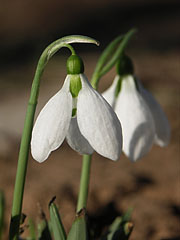 Giant snowdrops (Galanthus elwesii) in a garden in early spring
Giant snowdrops (Galanthus elwesii) in a garden in early spring
The giant snowdrop (Galanthus elwesii) looks somewhat different from the common snowdrop (Galanthus nivalis), which is native in Hungarian forests. The base of the inner tepals of the former species is also green. It is important, because common snowdrop is protected in Hungary, and that flower shouldn't be picked.
Mogyoród - Flere fotogallerier:
Du kan også være interessert i (Relaterte sider):
Destinasjoner i reiseguide:
Mogyoród (1 516 bilder + 19 panorama bilder)
Gödöllő Hills (Gödöllői-dombság) (4 203 bilder + 21 panorama bilder)
Pest megye (county) (15 122 bilder + 50 panorama bilder)
Budapest og dens omkringliggende (15 989 bilder + 52 panorama bilder)
Ungarn (27 287 bilder + 163 panorama bilder)
og i tillegg:
(innenfor her: Gödöllő Hills)
Fót (183 bilder)
Gödöllő (834 bilder + 2 panorama bilder)
Isaszeg (171 bilder)
Pécel (101 bilder)
Tura (30 bilder)
Veresegyház (365 bilder)
Szada (359 bilder)
Tóalmás (79 bilder)
Vácrátót (438 bilder)
Alle panoramabilde her:
Mogyoród (19 bilder)
Gödöllő Hills (Gödöllői-dombság) (21 bilder)
Pest megye (county) (50 bilder)
Budapest og dens omkringliggende (52 bilder)
Ungarn (163 bilder)
Europa (165 bilder)
Hver normal bilde her:
Mogyoród (1 516 bilder / 19 gallerier)
Gödöllő Hills (Gödöllői-dombság) (4 203 bilder / 54 gallerier)
Pest megye (county) (15 122 bilder / 221 gallerier)
Budapest og dens omkringliggende (15 989 bilder / 234 gallerier)
Ungarn (27 287 bilder / 462 gallerier)
Europa (30 494 bilder / 523 gallerier)
https://www.panadea.com/no/guidebook/mogyorod/photos/gal-008

Legg til i Favoritter Legg til Bokmerker
Del med vennene dine!
osv.
Om oss - Generelle forbehold -
Alle rettigheter reservert
- ©2010-2022
Neuronit Creative Studio - Mogyoród / Budapest / Ungarn



